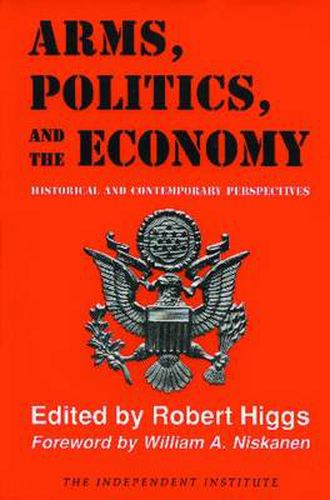Readings Newsletter
Become a Readings Member to make your shopping experience even easier.
Sign in or sign up for free!
You’re not far away from qualifying for FREE standard shipping within Australia
You’ve qualified for FREE standard shipping within Australia
The cart is loading…






The US Department of Defence is actually one of the world’s largest planned economies. Like all planned economies, it has gross inefficiencies. This book is a penetrating analysis of the military-industrial-Congressional complex, and offers new insights into how meaningful reform can be achieved. Prior to World War II, the United States maintained insignificant military forces and weapons manufacturing industries during peace. But the weapons industry that has grown since the end of World War II inhabits an ill-defined zone between genuine private enterprise and complete government planning. Does this unprecedented military-industrial-congressional complex efficiently serve the public’s interest in national security? In this book, eleven contributing scholars analyse such questions as whether overall military spending is too high or too low, why the military procurement system remains impervious to reform, and how special interests exploit the system. This book does not leave readers with simple solutions; depoliticising defence spending and eliminating military procurement mismanagement will not be easy. But this book does lay the foundation of understanding to help necessary reforms take place.
$9.00 standard shipping within Australia
FREE standard shipping within Australia for orders over $100.00
Express & International shipping calculated at checkout
The US Department of Defence is actually one of the world’s largest planned economies. Like all planned economies, it has gross inefficiencies. This book is a penetrating analysis of the military-industrial-Congressional complex, and offers new insights into how meaningful reform can be achieved. Prior to World War II, the United States maintained insignificant military forces and weapons manufacturing industries during peace. But the weapons industry that has grown since the end of World War II inhabits an ill-defined zone between genuine private enterprise and complete government planning. Does this unprecedented military-industrial-congressional complex efficiently serve the public’s interest in national security? In this book, eleven contributing scholars analyse such questions as whether overall military spending is too high or too low, why the military procurement system remains impervious to reform, and how special interests exploit the system. This book does not leave readers with simple solutions; depoliticising defence spending and eliminating military procurement mismanagement will not be easy. But this book does lay the foundation of understanding to help necessary reforms take place.